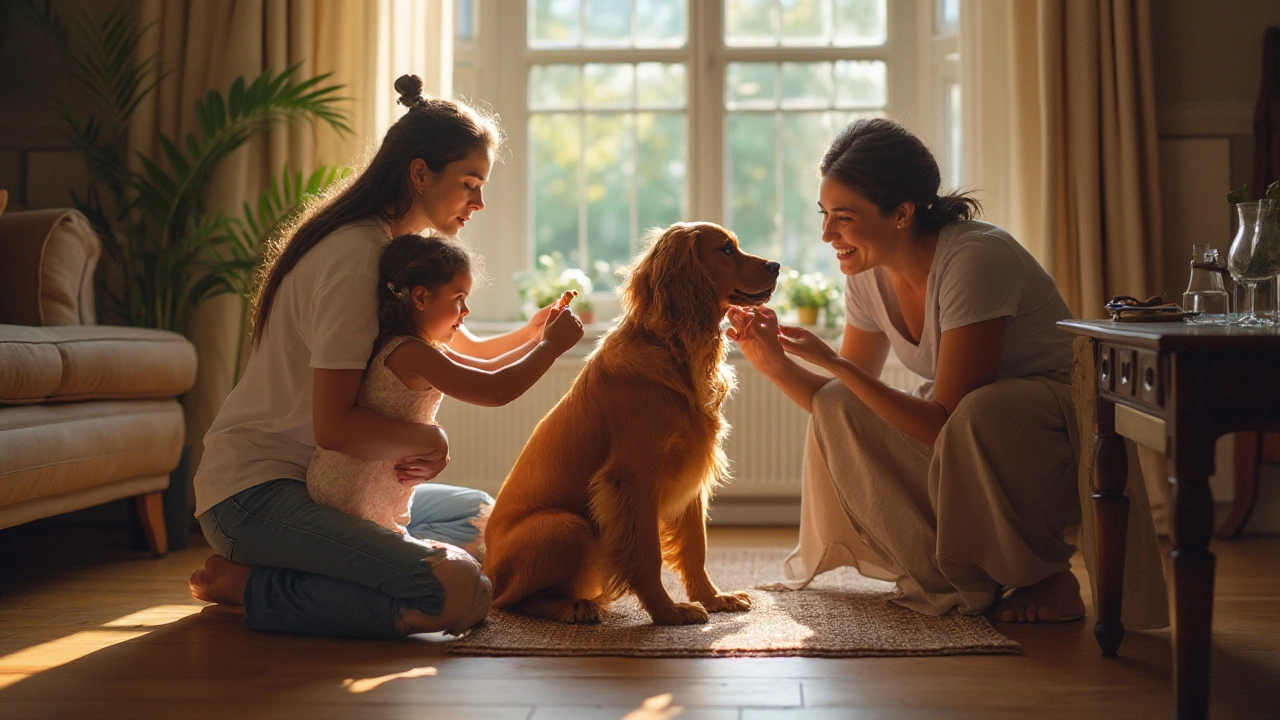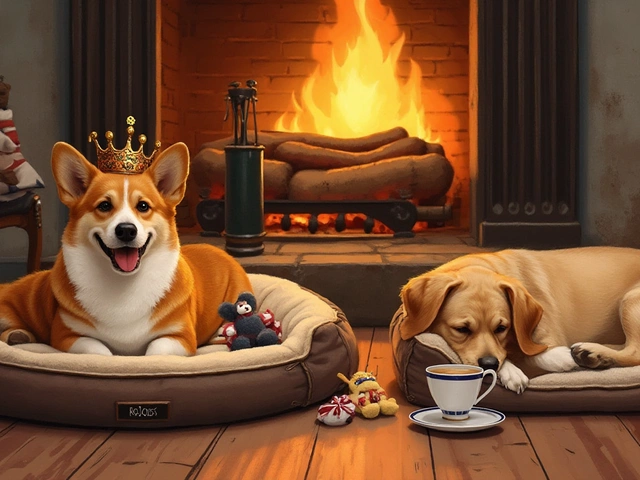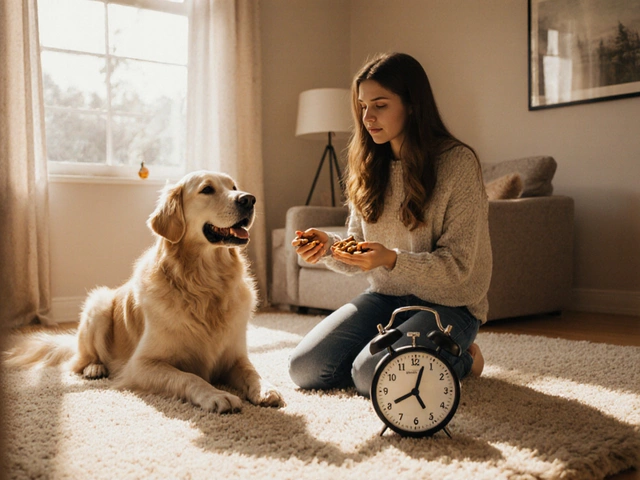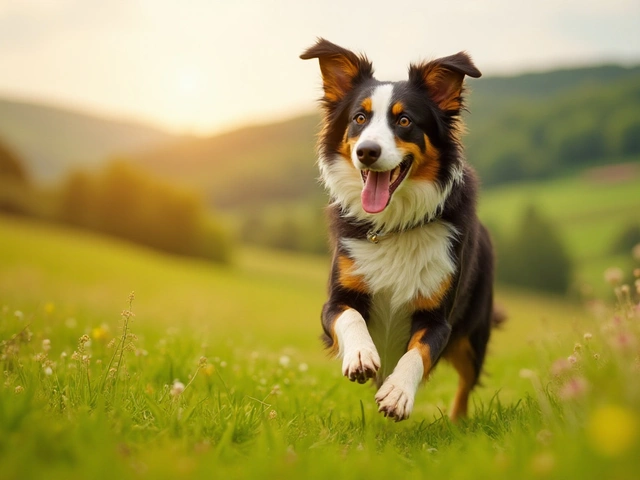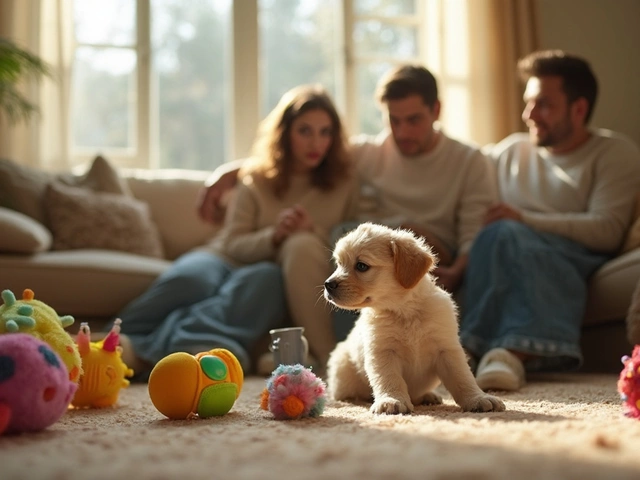When it comes to grooming our four-legged friends, time can be as elusive as a tail-chasing pup. Bringing out the best in your dog's appearance and health isn't just about patience; it's about understanding your dog's unique requirements. Each breed has its distinct needs, and every dog has its own quirks and behavioral patterns that can influence how long a grooming session should last.
From the palatial poodles to the scruffy terriers, the time commitment for grooming varies. Factors like your dog's coat type, their size, and temperament play significant roles in determining the time needed. Having the right tools and knowing the proper techniques can make the process faster and more pleasant. But what truly matters is making the experience safe and enjoyable both for you and your furry companion.
- Factors Affecting Grooming Time
- Grooming Tools and Techniques
- Breed-Specific Considerations
- Tips for an Efficient Grooming Session
Factors Affecting Grooming Time
Grooming a dog involves more than just snipping a few excess hairs or giving them a quick bath. It's an art that requires attention to detail and varies greatly depending on several key factors. First, the type of coat your dog possesses significantly impacts the time required for proper grooming. Dogs with long, luxurious fur, like Afghans or Shih Tzus, demand much more time than shorter-coated breeds like Beagles or Boxers. The intricacy of managing mats and tangles often turns into a meticulous task where patience is key.
Another crucial element is the size of your canine friend. Larger dogs naturally need more time for a thorough cleaning and brushing session simply due to the greater surface area. This time discrepancy is especially noticeable when blow-drying, as larger volumes of fur take longer to dry completely. Additionally, the larger the dog, the more difficult it can be to maneuver them during the grooming process, potentially extending the session even further.
While physical characteristics play a huge role, the behavior and temperament of your dog can arguably be the most unpredictable factor impacting grooming time. A dog that is calm and cooperative makes the process much smoother and quicker. However, a more anxious or lively pet might require frequent breaks, calming techniques, or even extra hands to assist, thereby prolonging the grooming session. According to animal behaviorist Dr. Sophia Yin, "The dog's comfort with handling can make or break a grooming session. Consistency in exposure and positive reinforcements can help."
In line with these factors, the choice of grooming equipment also heavily influences the time spent. High-quality tools that are well-maintained, from clippers to slicker brushes, ensure efficiency and effectiveness in grooming tasks. A powerful hairdryer tailored for pet grooming can substantially cut drying time, while a sturdy grooming table provides the groomer with better control and stability.
Puppies and senior dogs often require special attention, as their skin tends to be more sensitive, and they might not yet be accustomed to the grooming process. Puppies are especially wriggly and easily distracted, which could turn even a simple nail trimming into a lengthy ordeal. For older dogs, you have to be mindful of arthritis and other ailments that may require special handling techniques.
Keep in mind that the condition of your dog's coat at the start of the session plays a fundamental role. A well-maintained coat that's regularly groomed will naturally require less time than one that's been neglected and left to mat and tangle. Regular brushing between professional grooming appointments can significantly reduce the time each session takes, not to mention the added health benefits such as improved circulation and skin condition for your pet.
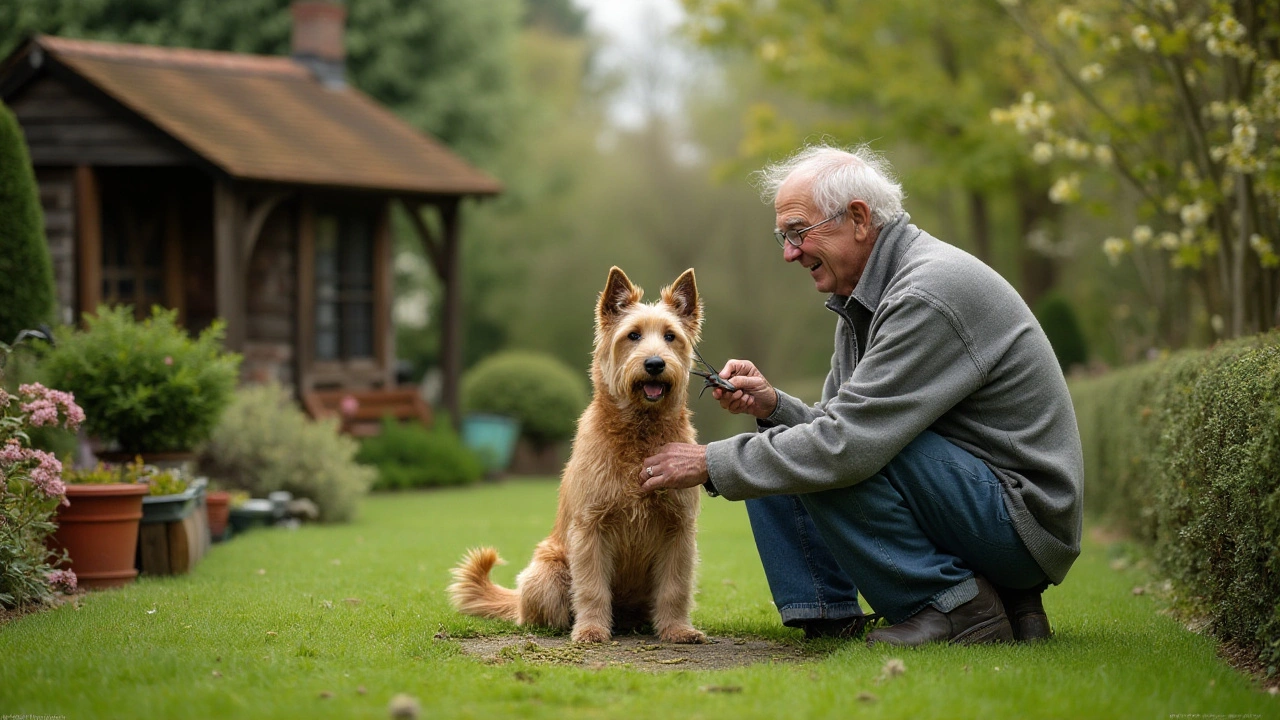
Grooming Tools and Techniques
Embarking on the journey of dog grooming is like equipping yourself for an adventure; the right gear can transform a daunting task into a seamless experience. Every groomer, whether a novice or a seasoned professional, knows that having a well-stocked grooming kit is crucial. From slicker brushes to nail clippers, these tools are the bridge between a scruffy mutt and a pampered pup. A slicker brush, with its fine wire bristles, is perfect for removing loose fur and dirt, especially in breeds with longer or double coats. Meanwhile, a sturdy pair of nail clippers ensures those claws are trimmed down to a safe and manageable length, helping prevent splits and discomfort. To keep the grooming session calm, many rely on tools like detangling sprays and shampoos, which not only help in cleaning but also make the coat shine.
One might wonder why specific tools are so important. The difference lies not only in ease of use but also in the end results, which impact your dog's comfort and health. A breed like the Pomeranian, with its lush coat, demands tools that can gently coax out knots without painful pulling. In contrast, a Labrador might need a rubber curry brush that massages while removing excess shedding fur. Techniques play a vital role as well; brushing should follow the direction of hair growth to prevent irritation. Bathing techniques also matter: using lukewarm water and ensuring thorough rinsing to prevent skin issues is essential.
Diving deeper into techniques, it becomes clear that each step of the grooming process can be tailored to improve both efficiency and enjoyment. Start by setting up a quiet, comfortable space where your dog feels secure. Begin with calm, soothing strokes of the brush to ease them into the activity. Often, professional groomers suggest talking to your pet in a gentle voice throughout the process. "Grooming should never be a race," suggests a seasoned groomer featured in a Pets Magazine interview.
"Take your time to ensure each movement is calm and reassuring."This builds trust and reduces anxiety, which can dramatically cut down on grooming time.
Beyond basic tools, consider investing in clippers if you’re inclined to maintain a specific breed's hairstyle. Using clippers requires patience and practice; a slip can lead to uncomfortable nicks. It's wise to familiarize yourself with the clipper’s functions before starting, perhaps by watching tutorial videos or starting with non-visible areas. And no grooming kit is complete without ear cleaning solutions and wipes, which are vital for preventing infections, especially in breeds with floppy ears. By maintaining an organized approach to your tools and techniques, you make strides not only for efficiency but safeguarding your pet’s health and happiness during each grooming session.
Understanding these nuances not only helps in achieving exemplary grooming results but also fortifies the bond between you and your pet. You'll find grooming time becoming a cherished ritual rather than a chore, where each stroke of the brush is a gesture of love. In the world of pet care, the right tools and techniques can turn a mundane task into an art form, fostering wellness and joy in equal measure. So next time you reach for that slicker brush or nail clipper, remember: You're not just grooming your dog; you're nurturing a profound friendship.
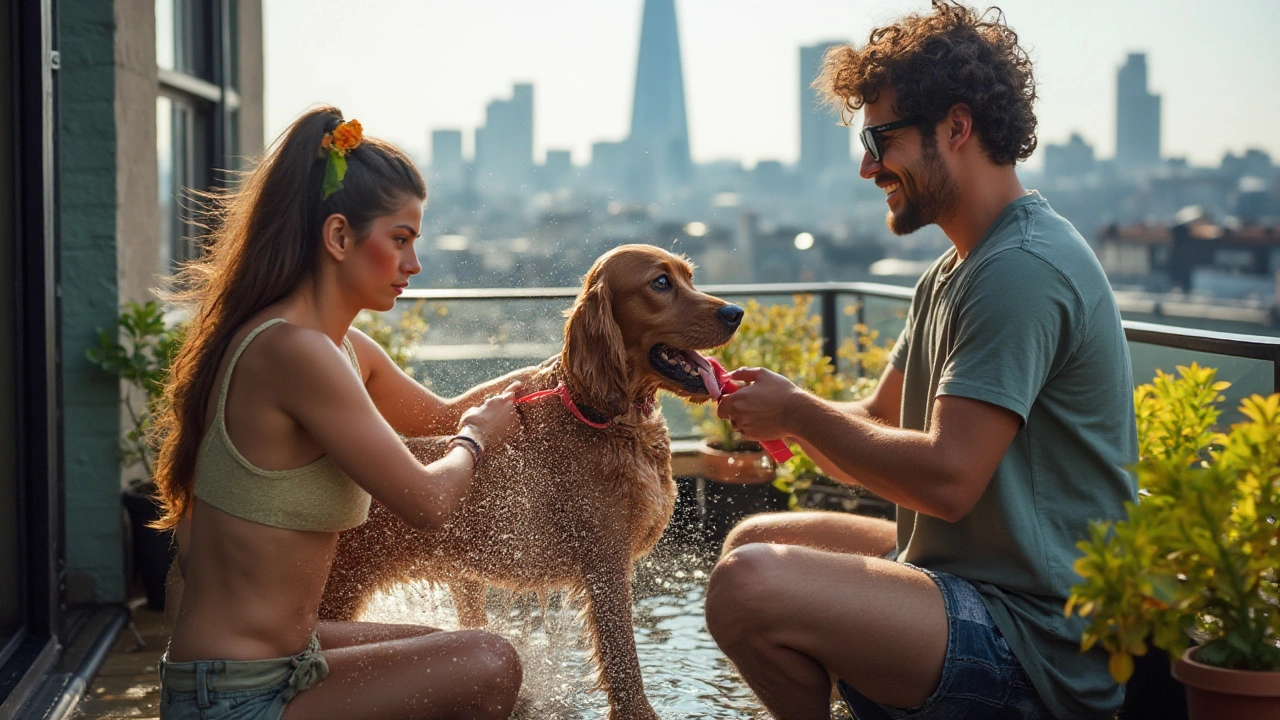
Breed-Specific Considerations
When it comes to dog grooming, not all breeds are created equal. Each breed carries with it a distinct set of characteristics that influence the grooming routine. For instance, the majestic Afghan Hound, with its long flowing locks, demands considerable time and effort to maintain that silky appearance. On the other hand, a Beagle, with its short coat, requires less frequent grooming but still benefits from regular brushing. Understanding these nuances ensures that your pet not only looks their best but feels comfortable too. The difference in grooming needs can be attributed to the coat type and texture, shedding tendencies, and even lifestyle of the dog. If you have an outdoor-loving Labrador, weekly baths and mud off solutions might become essential. Comparing this to a pampered indoor Chihuahua, known for its short coat, occasional baths and brushing may suffice, keeping its coat healthy and shedding minimal.
Hair length and density play significant roles too. Take the Poodle, for example. Despite its curly coat being known as low-shedding, it tangles easily if not looked after properly. Regular trims, professional cuts, and daily brushing routines can prevent painful matting. Meanwhile, a Siberian Husky, with a double coat built for harsh climates, has a specific shedding pattern. During ‘blowing’ seasons, a rigorous grooming routine to handle the massive release of undercoat fur will be necessary. Yet, even within a breed, each dog is unique. Coat condition, health issues, and personal comfort with the grooming process can alter what’s typically expected. Thus, figuring out your dog’s grooming timetable requires attention to these subtle but crucial details.
The Double Coat Dilemma
The double-coated breeds such as Golden Retrievers and German Shepherds merit a special mention due to their unique grooming requirements. The double coat consists of a dense undercoat and a protective outer coat, both of which require different tools and techniques to manage. Failing to properly care for these can lead to skin issues or a grimy undercoat. A thorough grooming session for these breeds involves initial detangling with a slicker brush followed by meticulous undercoat removal with a deshedding tool. Such efforts can take upwards of an hour, particularly during molting periods. “Grooming a double-coated dog is about maintaining the coat’s health without undermining its natural purpose,” says Lindsay Smith, a licensed pet care specialist. Proper handling of such coats supports their natural insulation and weather resistance, an essential for breeds often found in working roles.
It's important to consider other factors like the dog's age and health which can also influence grooming duration. Older dogs or those with specific health concerns might need shorter, more frequent grooming sessions to help them cope with the process. Understanding your pet’s breed-specific grooming needs is more than just a time commitment; it’s about ensuring comfort and promoting their wellbeing. By catering to these considerations, you transform grooming from a chore into a bonding experience, fostering trust and affection in the process.
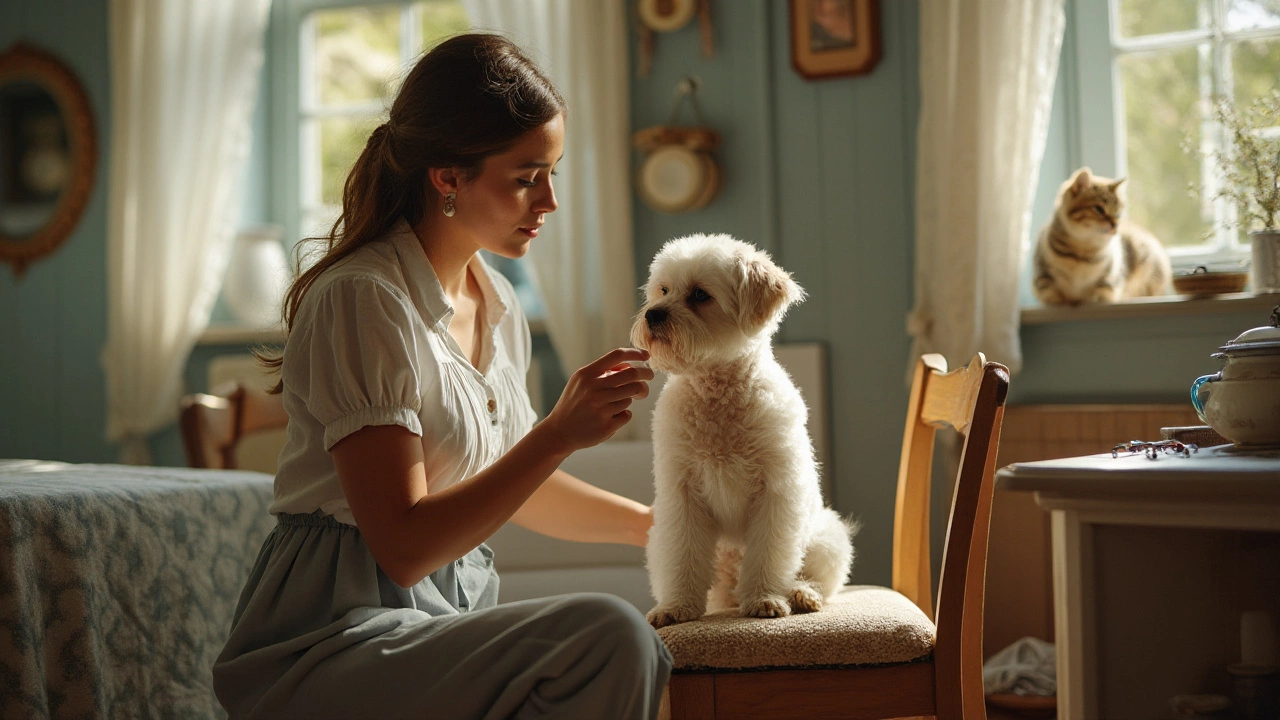
Tips for an Efficient Grooming Session
Grooming your dog can be a delight if handled thoughtfully and with care. The first step to an efficient grooming session is preparation. Gathering all necessary tools beforehand can save a great deal of time and prevent interruptions. You'll likely need a good quality brush, nail clippers, dog-safe shampoo, and a towel. If your fur buddy gets anxious, consider having some treats on hand to reward them for good behavior. Make sure the grooming space is comfortable and safe so your dog feels at ease.
The environment plays a significant role in determining how enjoyable and efficient the session will be. A calm, stress-free atmosphere can make all the difference. Try to choose a quiet part of your home away from distractions. Playing some calming music in the background is known to help keep dogs relaxed. It can also be beneficial to establish a routine by grooming your dog at the same time of day. Dogs thrive on routine, and it helps them anticipate what's coming, reducing their apprehension.
Routine and Consistency
Consistency is key when it comes to grooming. By establishing a regular schedule, you'll find each session becomes more predictable. This is important for building trust with your pet. Whether it's weekly, bi-weekly, or monthly largely depends on your dog's breed and hair length. For instance, dogs with longer hair often require more frequent grooming to prevent mats and tangles. Get familiar with your dog’s coat type so you can set a grooming schedule that keeps them looking fabulous.
Always reward your pup with treats and affection after each grooming session. Positive reinforcement helps them associate grooming with positive experiences. Patience is crucial, especially for dogs that are new to the process. Never rush the grooming; take the time to learn about their preferences and tolerances. If your dog becomes uncooperative or anxious, take a short break to let them calm down. Remember, your dog can sense your energy, so stay calm and supportive throughout.
"Take care of your pet, and they will take care of you. Grooming isn't just maintenance—it's love in action." - Unknown Author
Technology That Helps
We live in a modern age where technology can assist in making grooming easier. From smart grooming tools that measure pressure when brushing, to doggie blow dryers with adjustable heat settings; it's worth investigating what's available to enhance your experience. Don't overlook online tutorials or videos that offer step-by-step guidance tailored to your dog's unique needs. Many brands provide educational content specifically for grooming different coat types and breeds, giving you a wealth of knowledge at your fingertips.
Finally, don't hesitate to reach out to professional groomers for advice or look into dog grooming kits designed by experts. Often, these kits come with tools and instructions that fit a variety of dog breeds and coat types. Consider joining pet grooming forums or communities where you can share experiences and gather tips from fellow dog lovers. The more informed you are, the more enjoyable the grooming time will be for both you and your pet.

